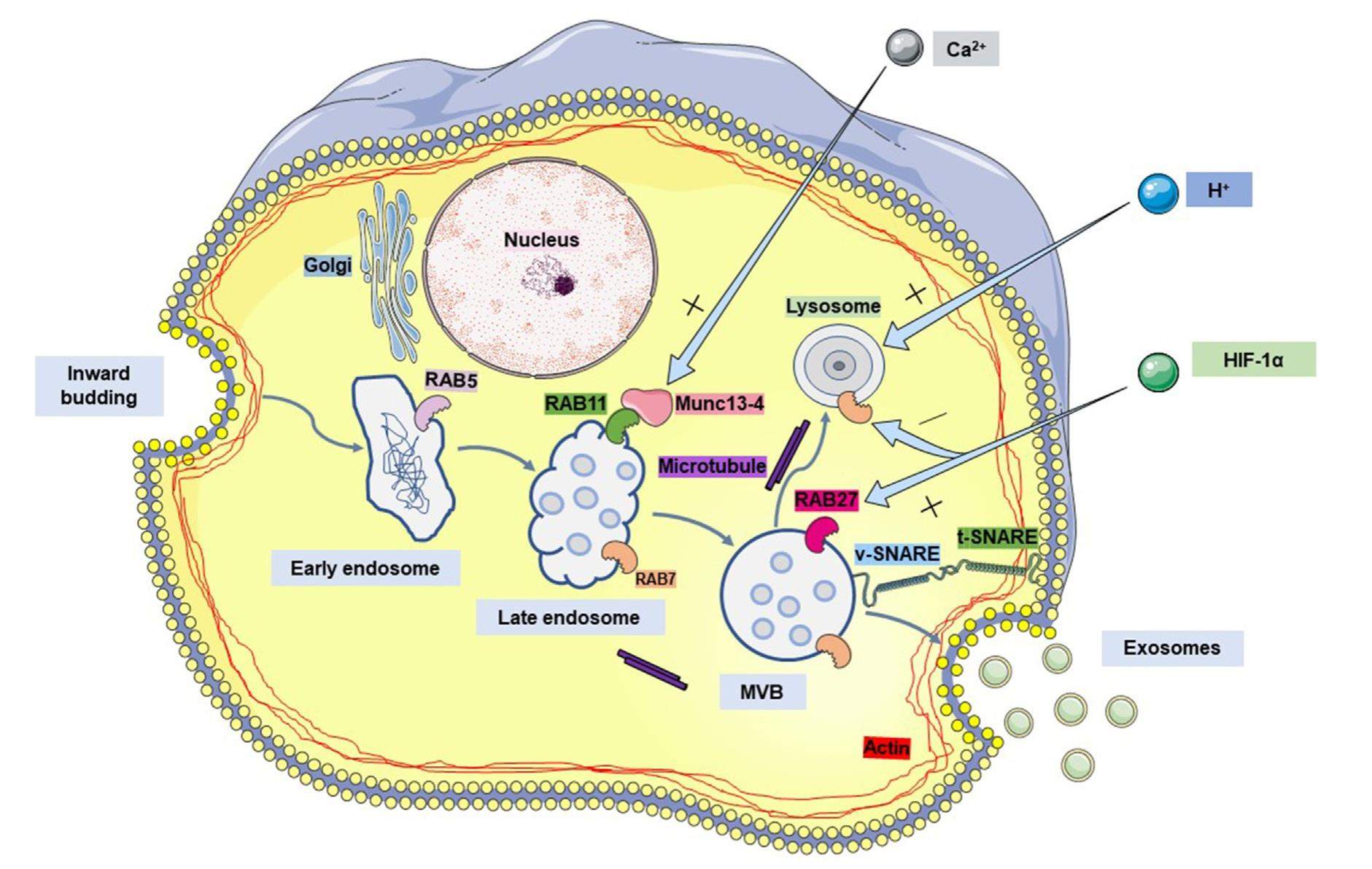
The biogenesis and secretion of exosomes and multivesicular bodies (MVBs): Intercellular shuttles and implications in human diseases


Exosomes carry and transmit signaling molecules used for intercellular communication. The generation and secretion of exosomes is a multistep interlocking process that allows simultaneous control of multiple regulatory sites. Protein molecules, mainly RAB GTPases, cytoskeletal proteins and soluble N-ethylmaleimide-sensitive fusion attachment protein receptor (SNARE), are specifically regulated in response to pathological conditions such as altered cellular microenvironment, stimulation by pathogenic factors, or gene mutation. This interferes with the smooth functioning of endocytosis, translocation, degradation, docking and fusion processes, leading to changes in the secretion of exosomes. Large numbers of secreted exosomes are disseminated by the flow of body fluids and absorbed by the recipient cells. By transmitting characteristic functional proteins and genetic information produced under disease conditions, exosomes can change the physiological state of the recipient cells and their microenvironment. The microenvironment, in turn, affects the occurrence and development of disease. Therefore, this review will discuss the mechanism by which exosome secretion is regulated in cells following the formation of mature secretory multivesicular bodies (MVBs). The overall aim is to find ways to eliminate disease-derived exosomes at their source, thereby providing an important new basis for the clinical treatment of disease.
